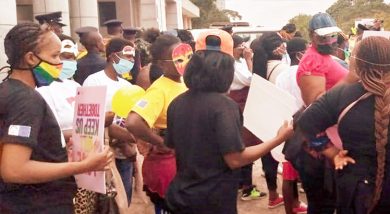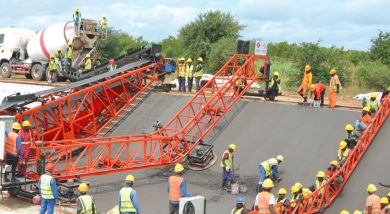Flood warning system to alert Karonga residents
Since the onset of the current rainy season, Malawians in low-lying areas have been haunted by flooding. The uncertainty is pronounced in Karonga on the northern tip of Malawi where loads of silt have left rivers shallow and prone to burst their banks on the way to Lake Malawi. In this article, Unicef Malawi communication officer RODGERS SIULA details how timely detection of potential flooding and early warning systems make life better along the North Rukuru River, one of the district’s most flood-prone areas:
For years, Karonga District along the northern shoreline of Lake Malawi has been struck by devastating floods back-to-back.
Communities on the northern tip of the country keep losing lives, property, infrastructure and livestock as severe floods from North Rukuru River disrupt livelihoods.
The river, which meanders through the lakeshore district on its way from Misuku Hill in Chitipa to the freshwater lake, has been buried in silt. This has left its course blurred and prone to perennial flooding.
The water easily burst its banks, chronically disrupting children’s access to schools when floods erupt with rage. When tragedy strikes, the schools are inundated by displaced persons who take shelter in classrooms for weeks. This brings teaching and learning to a lengthy stop.

With the 2023/24 rainy season underway, community members along the North Rukuru appear better prepared to lessen the loss and damage caused by the potential floods.
The community, with support from Unicef, has installed early warning systems in the river silted by unrestricted deforestation, housing and farms close to its banks.
The disaster reduction innovation excites Napoleon Mwanganya, the chairperson of a newly established village disaster management committee in Mwakimeme Area.
“The installation is timely,” he says. “It will alert us about any risk of flooding and help to save lives, property and livestock.”
The system is designed to warn community members of any impeding floods and allow them to flee to safer grounds swiftly.
The Malawi Red Cross Society, with funding from Unicef, also trained flood-prone communities in first aid and rescue operations.
The early warning system has a sensor that detects water levels in North Rukuru.
The sensor is placed at the lowest point of the river.
It has a gauge plate colour palette that automatically triggers alerts when water levels hit alarming levels.
Karonga district water development officer Marcel Kaunda says the good thing is that the brains behind the early warning system have been working with community members from the word go.
“We have done dry-runs of the system. The early warning alerts are programmed to be received widely through phones of the village committee members and officials at the Department of Disaster Management Affairs, Department of Water Resources and Malawi Red Cross Society via instant messages,” he explains.
Kaunda said in addition to the installed equipment, the community members have mapped out and marked areas likely to be hit by floods.
The mapping captured information about key infrastructure, roads and prospective evacuation centres.
“It is a good system when it comes to preparation and mitigation of the impact of floods,” Kaunda states.
Malawi Red Cross district coordinator Reuben Malema said the humanitarian organisation trained relevant structures on verifying the flood warning information and disseminating messages community members can use to save their lives and property.
He says: “With the flood warning information, district officials and community members can predict the infrastructure, social services and flood-prone zone to be affected by the floods, including identifying the most-at-risk population.
“This information is helpful to inform other stakeholders to plan prepositioning of supplies so that they can respond on time.”
The early warning systems were installed with funding from Arm through the Unicef Committee in the UK.






One Comment